Buy Trials of Mana
For a long time, Trials of Mana (AKA Seiken Densetsu 3) was one of the golden "lost" games of the SNES era. The sequel to cult classic Secret of Mana, it was bigger and more complex. In 2019's The Collection of Mana, Trials of Mana was officially translated into English. Less than a year later, we're also getting a full 3-D remake. For those of us nostalgic for the SNES version, this is a dream come true. For newcomers, this is an excellent game with a few flaws.
Trials of Mana is set in a fantasy world, where the magical power of mana flows through every land. Not all people are kind and good, and three different factions, each belonging to a different kingdom, are waging a war to control the source of the mana. A small group of brave heroes, empowered by a fairy sent from the Goddess of Mana, sets out to find the powerful Mana Sword and bring an end to the fighting.
Trials of Mana has six playable characters, but you'll only choose three. Whoever you select as the main character is the centerpiece of the plot and determines where the story goes. There are three possible outcomes, roughly divided between Riesz/Hawkeye, Duran/Angela and Kevin/Charlotte, but within that framework, there are still unique interactions and events. Trials of Mana was ambitious for an SNES RPG, and that's both a plus and a minus. The distinct characters and branching plots help the game feel fresh, but it is still a simple and down-to-earth story about good versus evil.
Even though you are selecting from three characters, each character has multiple builds. Once you reach level 18, you can level up into one of two job classes, one associated with light and the other associated with dark. Light classes tend to be more supportive and defensive, while dark classes tend to more combat-oriented. This unlocks new skills, an additional passive skill, and new things on which to spend your stat points. At level 35, you need to find special items that allow you to level up into one of four classes, depending on your first choice of dark or light. Possible class combinations are light-light, dark-light, light-dark and dark-dark. Each class combination has its own distinctive abilities and passives. Finally, at the very endgame, you unlock fourth-tier classes that are either dark or light (depending on your first choice) but have slightly different skills and passives, depending on how you leveled there.
For example, Kevin the werewolf is a physical powerhouse who turns into a wolf during night segments, which only make him more powerful. Naturally, you'd want to gravitate toward damage for him, and damage is an option. One of his class trees turns him into a monk who can heal as well as fight. This means you can use Kevin as your primary healer while still keeping a strong fighter in the group. Hawkeye the thief can focus on finding items and using ninja techniques that debuff his opponent or plain physical DPS. This is true of every character, and even if you choose the same character two games in a row, that doesn't mean you're stuck with them.
The original Trials of Mana had an odd blend of action and RPG mechanics, although it was tilted more toward the RPG. The remake has the same blend, but it's tilted more toward the action. Combat is done in real time, with a simple square-and-triangle combo system, dodging, and real-time spell usage. You have CS (special attacks) and MP (traditional spells), and your goal is to beat enemies while avoiding their attacks. You can swap between any of the three characters at a moment's notice and even pause to select items or spells to use.
It's an improvement over Trials of Mana for the SNES while maintaining the same general feeling. Magic is immensely more usable, since it doesn't pause the game every time it's used. Enemy attacks are marked by red lines on the ground so you can avoid them, which makes attacks feel more natural. Trials of Mana on the PS4 feels like the game that Trials of Mana for the SNES wanted to be, while still feeling familiar enough that I could translate my knowledge from the older game without much trouble.
The improved combat system has two very significant flaws. The first is that the game's camera is incredibly awkward. It took me hours to get used to it, and that was only after I figured out a few basic things. One: Lockon is almost worthless unless you're fighting a boss enemy, since the camera doesn't play nicely in busy melees. Two: You need to adjust the speed and distance in the option menu to be as fast and far back as you can go. Once I realized these two things, the camera went from "annoying" to "acceptable," but it's still more of a distraction than it should be.
The second flaw is that the character AI is extremely bad for the characters that you aren't controlling. The majority of the time, it does not matter because you can carry fights on your shoulders, but in any serious boss battle with a lot of complex weaving in and out, your allies regularly die in a few heartbeats. There is one early boss battle against a trap-laying wall that was agony to play through because the AI had no idea how to handle the traps. As the game progresses, this issue starts to lessen. Your characters get more durable, and you get more options for minimizing or healing damage. Initially, it can feel like pulling teeth, especially if you bring a squishy character like Angela, who spends most of the fight on the floor unless you directly control her.
Outside of the combat system, Trials of Mana is an incredibly faithful re-creation of the original games. The structure of the game is almost identical, and the enemies have many of the same drops. There are some improvements. In the original game, you were locked into the class and stats you selected, which meant you had to build a specific way early on, or you were left without an option. Trials of Mana allows you to re-spec your stats for a small fee any time, and eventually, you can make different class selections. The latter occurs fairly late in the game, but it's still a welcome quality of life improvement.
Unfortunately, this makes the areas where they didn't change things all the more annoying. To get your second Class upgrade in the original game, you needed to get "??? seeds," which can be planted in pots in any inn to turn into a random class-upgrade item. This is still true in the remake, down to the exact same enemy and farm locations. The most reliable way to get ??? seeds is for them to drop from enemies. The game gives you some free ??? seeds during the late game, but you're still at the mercy of RNG for getting the option to level to the class you want. (In my testing, seeds are randomized at pickup, not planting, so saving and loading doesn't seem to reset.) Likewise, high-end armor and weapons are also reliant on the seed mechanic. The game seems to weight things somewhat heavily in your favor, but I was still stuck with Kevin having significantly out-of-date equipment because the game wanted to give me three of Hawkeye's best weapon instead.
Likewise, there are some annoying artifacts from the SNES era that could've been streamlined. You have a limited inventory of in-battle items, but to use items outside of battle, you need to add them to the inventory and then use them, which is a lot of menu-fiddling just to use a stat-up item. The game has small areas with loading screens in between, which was no issue on the super-fast SNES carts but can get tedious on a PS4 with 15- to 20-second loads to go between two areas. When the developers added quality of life features, it makes you question why they didn't add more.
Trials of Mana is clearly intended to be played at least twice (and maybe more). It's true to the original in terms of length. A single playthrough will take 15-20 hours, but it'll take more if you backtrack and find the hidden Lil' Cactus to unlock bonus items. After finishing the story, you can play a 2- to 3-hour epilogue chapter that grants a new fourth class for your characters and the longest dungeon in the game. The game has three distinct paths, depending on your chosen main character. You'd need to play at least three times to see every possible outcome, but the remake adds a "New Game +" feature, which grants bonus stats and a 300% boost to XP.
Visually, Trials of Mana is a phenomenal update. The cel-shaded character models and environments do a fantastic job of capturing the feel of the original SNES sprites, right down to specific animations. It is a wonderful update that captures all the charm of the original and does a perfect job of evoking nostalgia.
The audio is a mixed bag. The soundtrack is excellent, including both new remixes and the original SNES tunes, but the voice acting is awful. The actors sound stilted, and some of the voice choices are bewildering. The standouts are Hawkeye and Angela, who sound excellent and emote well, while Princess Riesz's actress appears to be trying for "proper" and instead ends up at "awkward robot." There is Japanese voice acting available, but there's a fair bit of unsubtitled dialogue during battle and walking around, which you'll miss if you go that route. It's a shame because the occasional moment of excellence from random actors shows there was some heart in this game.
Trials of Mana is pretty much everything you could want from a remake of the original game. It is incredibly faithful and loving, while improving the original's combat system in significant ways. At its heart, it's an upgraded SNES RPG that's been saddled with poor AI, a lackluster camera, and bad voice acting. The core game is better than it ever was, but there is room to improve. I'd recommend it over the Collection of Mana version for your first experience, but don't expect it to clear as high a bar as Final Fantasy VII Remake did.
Score: 8.0/10
More articles about Trials of Mana Remake



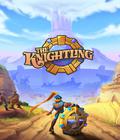
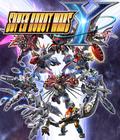
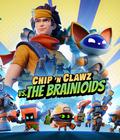
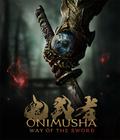

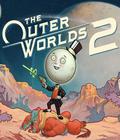
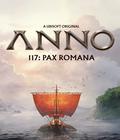

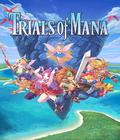 Trials of Mana remake is entirely rebuilt with revamped action-RPG battle, leveling and skill systems and modern 3D graphics.
Trials of Mana remake is entirely rebuilt with revamped action-RPG battle, leveling and skill systems and modern 3D graphics.










































